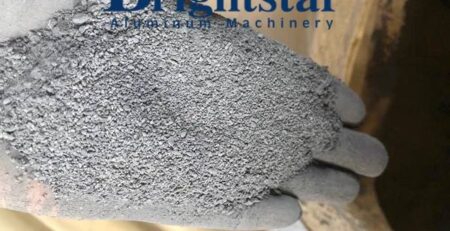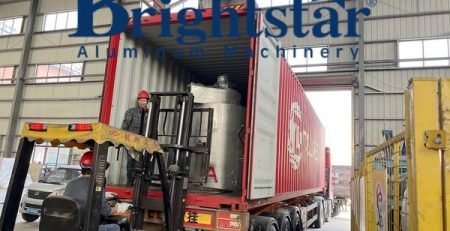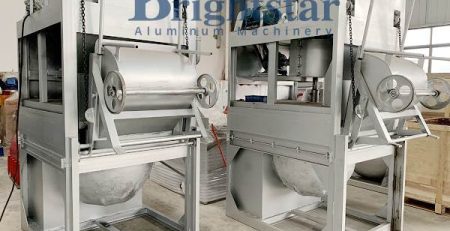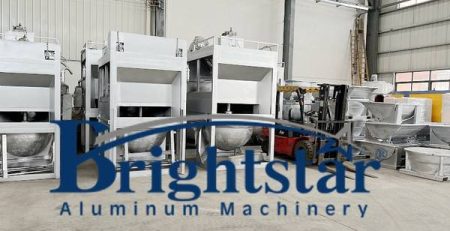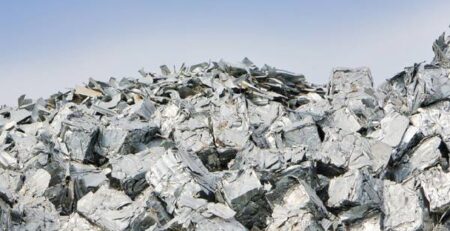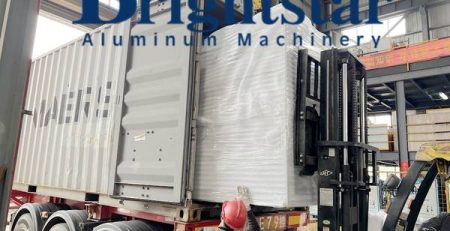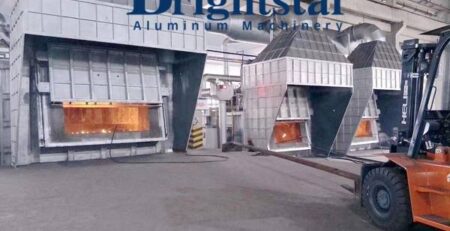Cắt giảm chi phí và lãng phí bằng các giải pháp xử lý cặn nhôm
Cắt giảm chi phí và lãng phí bằng các giải pháp xử lý cặn nhôm
Cắt giảm chi phí và lãng phí bằng các giải pháp xử lý cặn nhôm
Revolutionize your aluminum recycling operations with advanced dross processing equipment engineered for optimal efficiency and cost savings.
Dross Processing Equipment for Aluminum Recycling
Giới thiệu
In the evolving landscape of aluminum recycling, the significance of dross processing equipment cannot be overstated.
As industries strive to achieve higher efficiency and sustainability, understanding the role and benefits of advanced dross processing technology becomes imperative.
This article delves into the intricacies of dross processing equipment and its pivotal role in aluminum recycling.
Overview of Aluminum Recycling and Its Importance
Aluminum recycling is a cornerstone of the circular economy, reducing the need for primary aluminum production and conserving natural resources.
Recycling aluminum saves up to 95% of the energy required to produce new aluminum from bauxite ore.
This process not only mitigates environmental impact but also bolsters economic viability by lowering production costs and reducing waste.
What is Dross in Aluminum Recycling?
Dross is a byproduct of the aluminum smelting process, comprising a mixture of aluminum oxide and aluminum metal.
During smelting, impurities and oxidized aluminum form a scum on the surface of molten aluminum, known as dross.
Efficient processing of this dross is crucial to reclaim valuable aluminum and minimize waste.
The Role of Dross Processing Equipment
Dross processing equipment plays an integral role in aluminum recycling by separating metallic aluminum from the oxides and impurities.
This machinery enhances the recovery of aluminum, ensuring that valuable material is not discarded and that the recycling process remains economically and environmentally sustainable.
Dross processing equipment includes an aluminum dross machine(Dross trolley type or movable pot type), aluminum dross cooler, ball mill and screening machine.
MỘT máy cán nhôm can extract more than 90% nhôm từ xỉ nóng, a mát cặn can cool the processed hot dross to normal temperature in a short time, ball mill and screening machine for dross grinding and crushing and separating in different grades.
Types of Dross Processing Equipment
Dross processing equipment varies based on the scale and specific needs of recycling operations.
These machines can be broadly categorized into primary and secondary processing equipment.
Primary Aluminum Dross Processing Equipment
Primary processing equipment is used immediately after the dross is skimmed from the furnace.
This equipment typically includes aluminum dross machine, dross cooler and rotary furnaces designed to extract the maximum amount of aluminum from the dross.
Secondary Aluminum Dross Processing Equipment
Secondary processing equipment handles the dross that has already undergone primary processing.
This machinery focuses on further refining the separated aluminum and oxides, often using advanced techniques to recover any remaining aluminum and purify the byproducts.
This equipment typically includes ball mill, máy sàng lọc, rotary furnaces, and calcine furnace and baghouse dust collector designed to extract the maximum amount of aluminum from the dross.
Key Features of Effective Dross Processing Equipment
Effective dross processing equipment is characterized by its ability to maximize aluminum recovery, minimize energy consumption, and reduce operational costs.
Key features include robust construction, efficient separation mechanisms, and advanced control systems to optimize processing parameters.
Innovations in Dross Processing Technology
Recent innovations in dross processing technology have revolutionized the aluminum recycling industry.
These advancements include automated systems, improved separation techniques, and the integration of artificial intelligence to enhance processing efficiency and accuracy.
Environmental Benefits of Using Dross Processing Equipment
Utilizing advanced dross processing equipment has significant environmental benefits.
By reclaiming more aluminum from dross, less waste is generated, reducing the environmental footprint of aluminum production.
Ngoài ra, these technologies contribute to lower greenhouse gas emissions by minimizing the need for primary aluminum smelting.
Economic Advantages of Advanced Dross Processing
The economic advantages of advanced dross processing are substantial.
By increasing aluminum recovery rates, companies can reduce raw material costs and improve profitability.
Efficient dross processing also decreases waste disposal costs and enhances overall operational efficiency.
How to Choose the Right Dross Processing Equipment
Selecting the right dross processing equipment involves assessing factors such as the scale of operations, the type of dross being processed, and the desired level of automation.
It’s essential to consider the specific needs of the recycling facility and the capabilities of different equipment models.
Considerations for Small-Scale Aluminum Recyclers
Small-scale aluminum recyclers face unique challenges, such as limited space and budget constraints.
When choosing dross processing equipment, these recyclers should prioritize machines that offer high efficiency in a compact, cost-effective package.
Industrial-Scale Dross Processing Solutions
Industrial-scale dross processing solutions are designed for large recycling operations, offering high throughput and advanced automation features.
These systems often include multiple stages of processing and sophisticated monitoring systems to ensure optimal performance.
Maximizing Efficiency in Aluminum Recycling
Efficiency in aluminum recycling is maximized through the integration of advanced dross processing equipment, streamlined workflows, and continuous monitoring and optimization of the recycling process.
This holistic approach ensures that the maximum amount of aluminum is recovered with minimal energy expenditure.
Nghiên cứu điển hình: Success Stories with Dross Processing Equipment
Numerous case studies highlight the success of implementing advanced dross processing equipment in aluminum recycling operations.
These stories demonstrate significant improvements in aluminum recovery rates, tiết kiệm chi phí, and environmental impact reduction.
Customer project cases:
India customer for aluminum ingot production, 1000-1500MT production capacity per month, applied 2 bộ máy xỉ nhôm, 1 set of 1320mm 10M dross cooler for the dross processing. xe đẩy mảnh với đơn đặt hàng máy để sử dụng một năm rưỡi 2 years running, they can get 1-2% net profit with aluminum metal extraction from the dross, reduce the labor work and make the production efficient, creating sustainability development.
Nigeria customer for scrap recycling and ingot production, 3000-5000MT production capacity per month, applied 4 Trong 1 aluminum dross processing system, máy cán nhôm, mát cặn, ball mill and screening machine. xe đẩy mảnh với đơn đặt hàng máy để sử dụng một năm rưỡi 1 year running, they bought another one system for their workshop and they plan to buy another one after the second system is installed.
Common Challenges in Dross Processing and How to Overcome Them
Common challenges in dross processing include handling varying dross compositions, managing energy consumption, and ensuring consistent equipment performance.
Overcoming these challenges requires a combination of robust equipment, regular maintenance, and adaptive processing techniques.
Maintenance Tips for Dross Processing Equipment
Proper maintenance of dross processing equipment is crucial for ensuring long-term efficiency and reliability.
Regular inspections, timely repairs, and adherence to manufacturer guidelines can prevent breakdowns and extend the lifespan of the machinery.
Future Trends in Dross Processing Technology
The future of dross processing technology is promising, with ongoing developments in automation, artificial intelligence, and material science.
These advancements are expected to further enhance the efficiency and sustainability of aluminum recycling processes.
Integrating Dross Processing Equipment into Existing Recycling Operations
Integrating new dross processing equipment into existing recycling operations requires careful planning and coordination.
It involves assessing current workflows, training personnel, and gradually phasing in new equipment to ensure a smooth transition.
Comparing Leading Brands of Dross Processing Equipment
When choosing dross processing equipment, it’s essential to compare leading brands based on factors such as performance, reliability, cost, and after-sales support.
Detailed comparisons can help recyclers make informed decisions that align with their operational needs.
The Impact of Legislation on Dross Processing Equipment Standards
Legislation and regulatory standards play a significant role in shaping the development and use of dross processing equipment.
Compliance with these standards ensures that equipment meets safety, môi trường, and performance requirements.
Training and Safety Measures for Operating Dross Processing Equipment
Operating dross processing equipment requires thorough training and adherence to safety measures.
Proper training ensures that operators can efficiently use the machinery while minimizing the risk of accidents and equipment damage.
Frequently Asked Questions About Dross Processing Equipment
This section addresses common questions about dross processing equipment, providing insights into its operation, benefits, and maintenance.
It serves as a valuable resource for recyclers looking to optimize their aluminum recycling processes.
Phần kết luận:
The Future of Aluminum Recycling with Advanced Dross Processing Equipment
Advanced dross processing equipment is set to transform the aluminum recycling industry, offering unparalleled efficiency, lợi ích môi trường, and economic advantages.
Embracing these technologies will be crucial for recyclers aiming to stay competitive and sustainable in the future.



